One of the greatest architectural achievements in the history of the United States was a structure built during one of the worst financial periods in modern history.
Let’s take a closer look at some of the most interesting facts about Hoover Dam, an astounding dam that has become one of the most popular man-made tourist attractions in Arizona and Nevada.
1. It’s located on the border of two Western U.S. states
Hoover Dam is an enormous structure located on the Colorado River near the city of Boulder City, Nevada. It’s situated right on the border of the U.S. states of Nevada and Arizona, about 48 kilometers (30 miles) southeast of Las Vegas.
Boulder City was established when the thousands of workers building the dam settled in the area. It was named after the nearby Boulder Canyon, one of the huge canyons that were originally considered a location for the dam.
The dam was eventually built inside the Black Canyon which is situated just below Boulder Canyon. This canyon was named after the Black Mountains, a mountain range in which its eastern part is situated. The western part of the canyon is located within the El Dorado Mountains.
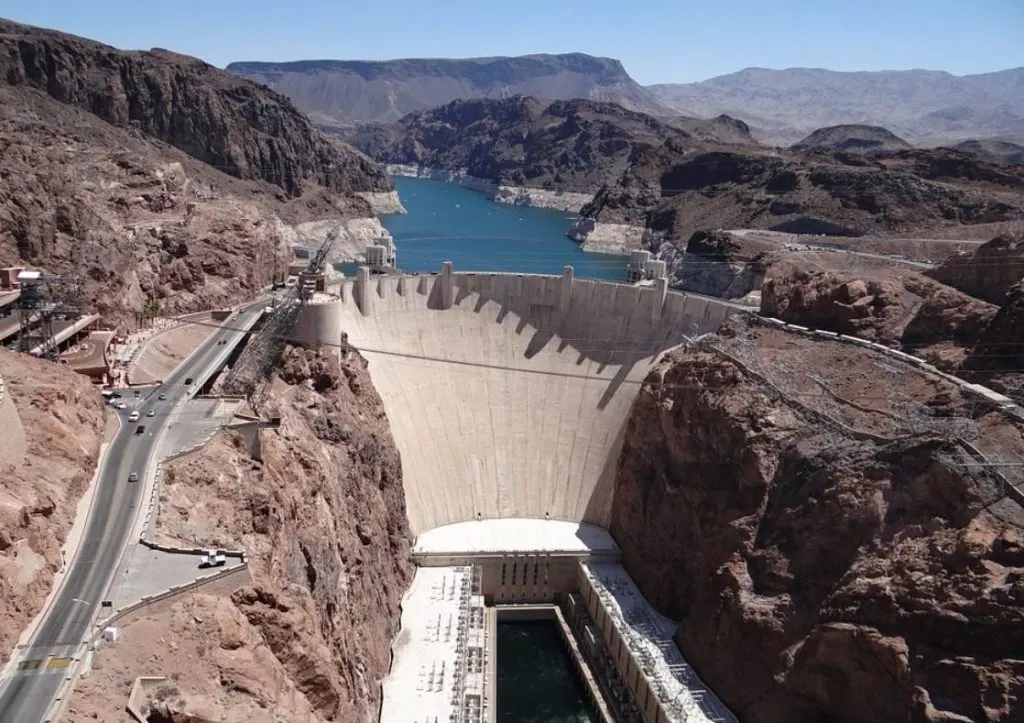
2. It was built in just 5 years during the Great Depression
The project to build the dam in this location was authorized in 1928. This was the year before the Wall Street Crash happened, an event that initiated the Great Depression.
Regardless of the bleak financial situation in the country, a joint venture of 6 different construction companies was formed called “Six Companies, Inc.“
They didn’t spend much time coming up with a name for the joint venture, a prelude to the speed at which the dam was constructed. The project started in early 1931 and was officially completed just 5 years later on March 1, 1936.
3. The name of the dam didn’t become permanent until the year 1947
Even though the dam was named after President Herbert Hoover (1874-1964), a man who was in office between 1929 and 1933 as the 31st president of the United States, the dam wasn’t originally named as such.

The project was originally referred to as the “Boulder Dam” or as the “Boulder Canyon Dam.” Shortly before construction began, the name “Hoover Dam” was first used by the Secretary of the Interior Ray Wilbur.
This name somewhat stuck even though the Roosevelt administration, who came to office in 1933, referred to the dam as the Boulder Dam. It wasn’t until a bill of Congress was passed in 1947 that the name of the dam was officially restored to “Hoover Dam.”
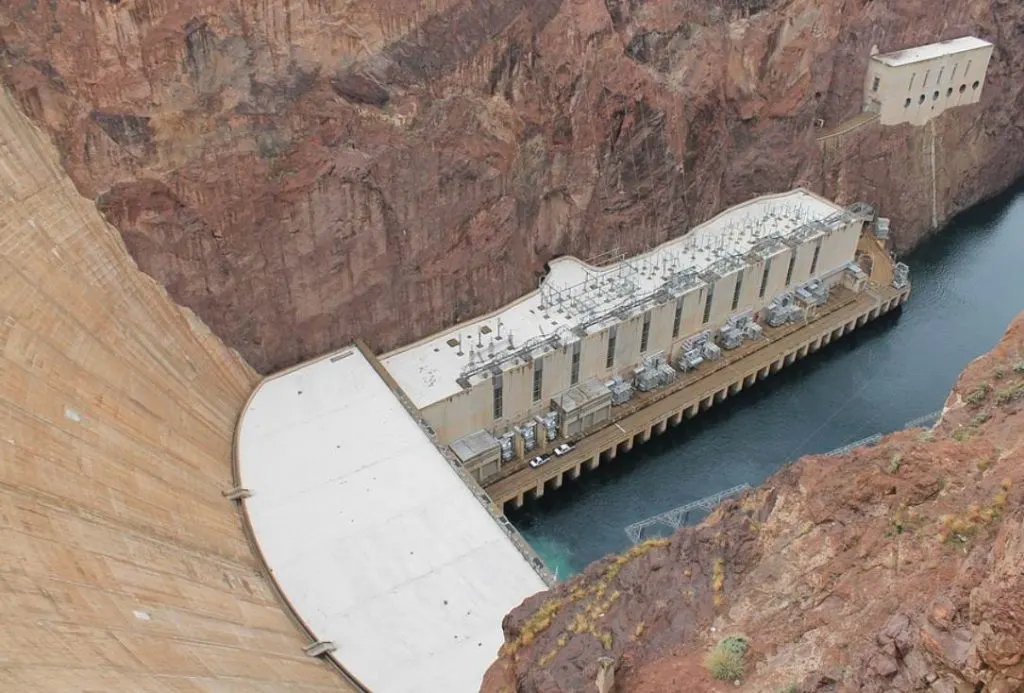
4. The scale of this structure is mind-blowing
Granted, Hoover Dam is not the biggest dam in the world anymore by any means, especially since countless similar structures have been built in China in the past couple of decades.
It still has some amazing stats that emphasize the scale on which this structure was built:
- Height: 221.4 meters (726.4 feet)
- Length: 379 meters (1,244 feet)
- Width at the base: 200 meters (660 feet)
- Width at the top: 14 meters (45 feet)
- Concrete Volume: 2,480,000 cubic meters (3,250,000 cubic yards)
- Installed capacity: 2,080 MW
The dam also creates the largest reservoir in the United States (when it’s full) known as “Lake Mead.” It has a length of 180 kilometers (112 miles) and a surface area of 640 square kilometers (247 square miles).
This enormous reservoir has a maximum depth of 162 meters (532 feet) and can hold 32.236 cubic kilometers (7,733 cubic miles) of water, quite dazzling stats indeed!
5. It’s a popular tourist attraction visited by over 1 million people annually
The dam opened up for tours as early as 1937, the year following its completion. These were briefly halted during World War II but reopened shortly after in 1945. The demand was huge as yearly visitor numbers rose to 448,081 by 1953.
A new visitor center was built in 1995 which resulted in the yearly visitor count rising to over 1 million people for the first time.
A new tour coined the “Discovery Tour” was established in 2001 and the visitor count has consistently been over 1 million yearly tourists, making it one of the most popular tourist attractions in Nevada and Arizona.
The tours are offered by the Bureau of Reclamation and tickets can only be purchased at the visitor center.
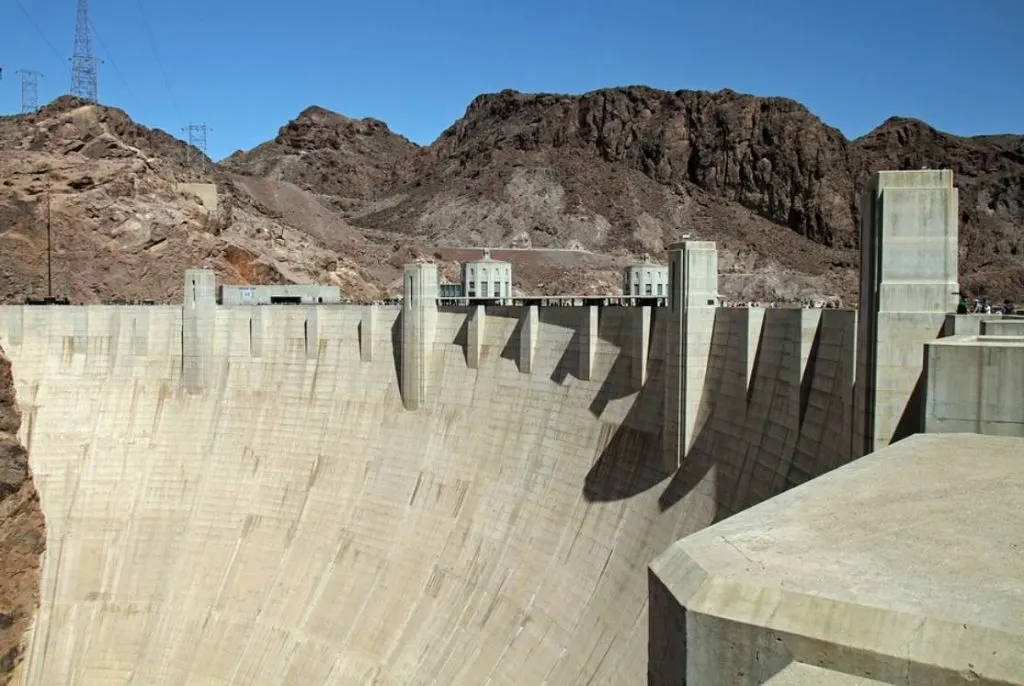
More interesting facts about Hoover Dam
6. Even though the project was only approved in 1928, a report to request a dam to be built in the area was already filed by the Bureau of Reclamation in the year 1922. This report was referred to as the “Fall-Davis” report in honor of Interior Secretary Albert Fall.
7. This report originally stated to build the dam “in or around the Boulder Canyon.”
Even though the Bureau of Reclamation dismissed the use of Boulder Canyon to build the dam and instead suggested the Black Canyon, it was still referred to as the “Boulder Dam” during this early phase.
8. Las Vegas was a small city of about 5,000 inhabitants during the 1920s and early 1930s. That’s why a camp was erected by the government nearby which was to become Boulder City.
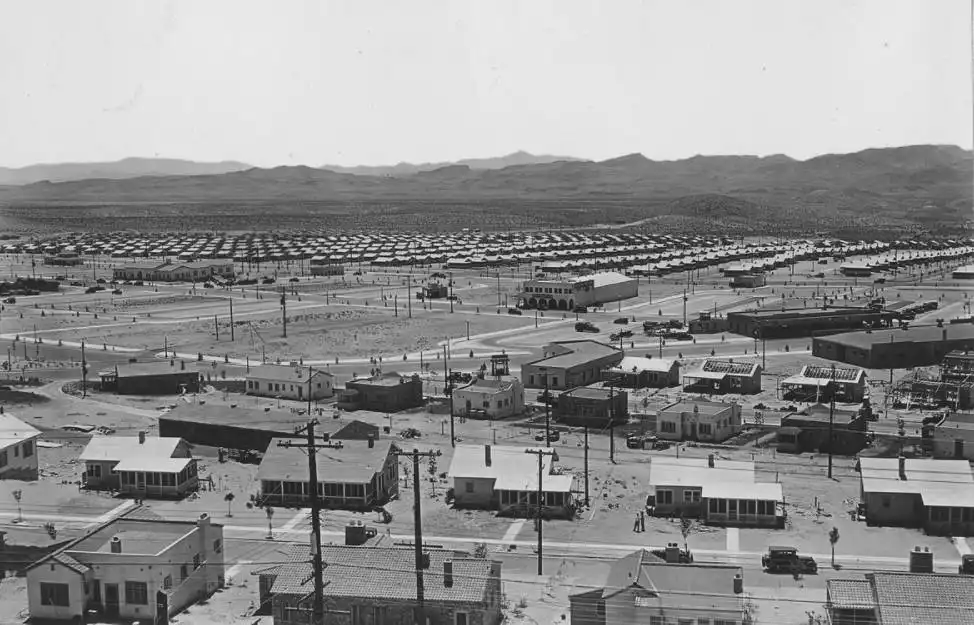
Anywhere between 10,000 and 20,000 unemployed people came to the site and thousands were hired. By 1932, over 3,000 people were employed by Six Companies Inc. By 1934, this number had reached 5,251.
9. The first project to be completed before work on the dam could start was to diver the Colorado River away from the construction site. This was achieved by drilling 4 tunnels into the canyon walls which each were 17 meters (56 feet) in diameter.
2 of the tunnels were drilled on the Arizona side and 2 on the Nevada side of the canyon. Combined, these tunnels have a length of 5 kilometers (3 miles).
10. The amount of concrete used to build the dam was incredible. It was estimated that a single continuous pour of concrete would take 125 years to cool, so the dam was built by pouring concrete in numerous blocks.
These square blocks had a diameter of up to 15 meters (50 feet) and a height of up to 1.5 meters (5 feet). This means that the face of the dam consists of countless blocks of concrete stacked on top of each other.
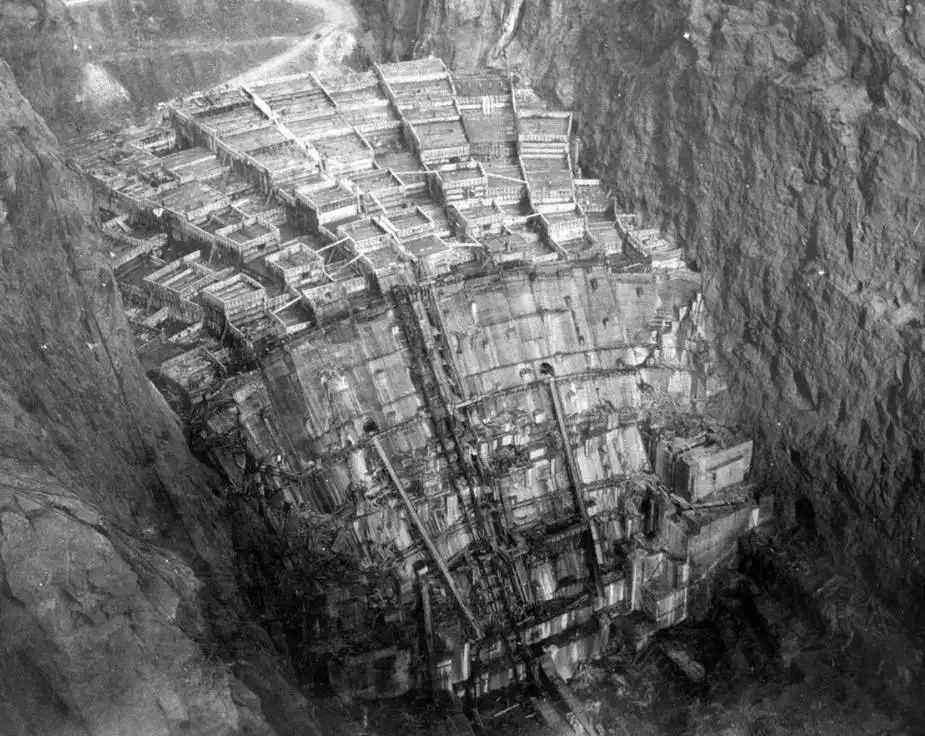
11. Unfortunately, building this structure was an extremely dangerous endeavor. This means that a total of 112 people lost their lives while working on the project.
The first death occurred ay back on December 20, 1922, when a surveyor named John Gregory who was looking for a perfect spot to build the dam drowned in a flash flood.
12. Building the dam was extremely expensive as well. The budget of the dam in 1931 was about $49 million, the equivalent of about $680 million today.
13. The water level of Lake Mead has been consistently lowering since the 2000s. The causes are a combination of extreme droughts in the area and an increased demand for water from the Colorado River upstream.
This is the main reason why the power plant has lost 23% of its output and now only produces 1592 MW a year, a number that could potentially decrease further as water levels drop even lower.
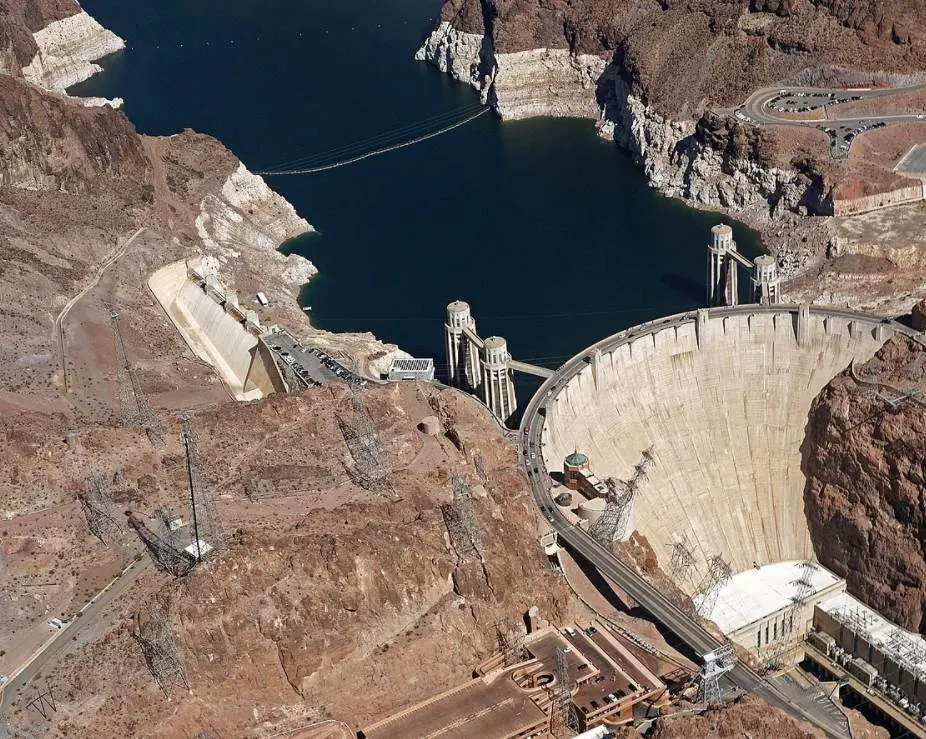
14. Even though Six Companies, Inc. was a joint venture formed to build Hoover Dam, the company went on to build multiple other large-scale projects later on.
Some of these included Parker Dam, a section of the enormous Grand Coulee Dam, and the Colorado River Aqueduct, an immense structure across the Mojave and Colorado Deserts that provides drinking water to Southern California.
15. An amazing bridge that carries Interstate 11 and U.S. Route 93 across the Black Canyon near the dam was completed in 2010.
This bridge is called the Mike O’Callaghan–Pat Tillman Memorial Bridge, named in honor of the Governor of Nevada between 1971 and 1979 and an American football player who was killed by friendly fire in Afghanistan in 2004.
This magnificent structure has a length of 579 meters (1,900 feet) and carries the decks at a height of 270 meters (890 feet) above the Colorado River below.

